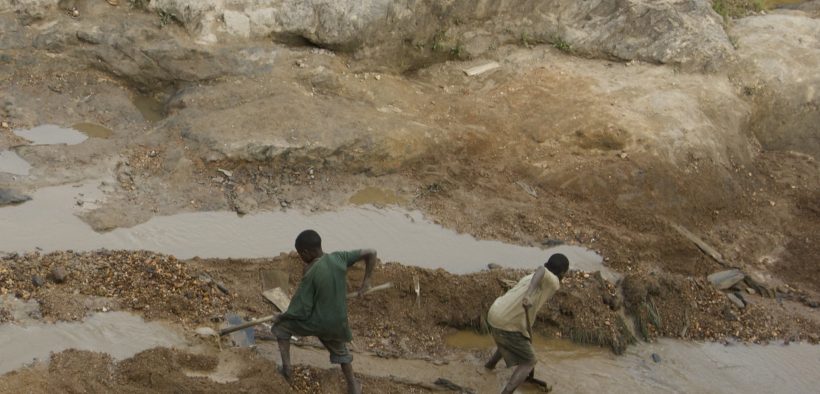Report Finds Human Rights Abuses Linked to Most Renewable Energy Companies

“As the renewable energy sector finds its feet, it is crucial that it introduces rigorous human rights protections throughout its supply chains.”
A corporate watchdog found last month that most of the top global companies extracting minerals for renewable energy infrastructure have been accused of human rights abuses in their mines. As the Guardian’s Kate Hodal reported:
“Analysis published by the Business & Human Rights Resource Centre (BHRRC), an international corporate watchdog, revealed that 87% of the 23 largest companies mining cobalt, copper, lithium, manganese, nickel and zinc – the six minerals essential to the renewable energy industry – have faced allegations of abuse including land rights infringements, corruption, violence or death over the past 10 years.
As the global economy switches to low-carbon technologies to combat global heating, demand for minerals could rise by as much as 900% by 2050, according to World Bank estimates.”
Exploitation Concerns as Renewable Energy Industry Grows
Critics argue that the burgeoning renewable energy sector must not forfeit its moral upper hand over the fossil fuel industry by engaging in brutal capitalist extraction.
“As the renewable energy sector finds its feet, it is crucial that it introduces rigorous human rights protections throughout its supply chains,” BHRRC senior researcher Eniko Horvath told the Guardian. “This is essential in order to prevent abuse, retain the social license to operate, and avoid costly delays due to local opposition.”
BHRRC’s deputy director Marti Flacks told the Guardian that the lack of oversight in countries where minerals are mined allow companies to get away with abuses, and that the industry should take human rights into its own hands as the world transitions to clean energy.
“The renewable energy sector is growing really fast and it has a chance to change the standards and practices of the industry,” said Flacks. “This is a unique chance to send the sector a message to say: ‘You have to do your due diligence, you have to have a human rights policy and you have to be engaging in multi-stakeholder initiatives, doing site visits, and most importantly talking to communities and NGOs to get accurate reporting of what’s going on.’”
Abuses Particularly Bad in Congo
The Democratic Republic of Congo, where more than 70% of the world’s cobalt is mined, received the highest amount of recorded abuses, with copper mines in Zambia closely following. Reports found that tens of thousands of cobalt miners endure dangerous working conditions and toxic pollution. Many of these miners are believed to be children.
The DRC has a long history of Western exploitation, from the horrors enacted by the Belgians under King Leopold in the 19th century to the CIA-backed murder of the country’s first democratically-elected leader, Patrice Lumumba, in 1961.
Lumumba’s execution was also tied to conflict minerals, as the United States used uranium from Congolese mines to develop the first atomic bombs in Hiroshima and Nagosaki, and feared Lumumba’s “determination to achieve genuine independence and to have full control over Congo’s resources,” as explained by African history expert Dr. Georges Nzongola-Ntalaja.
As investigative journalist Nick Turse recently wrote, the Congo’s century-old wounds linger in what remains “one of the most persistent bloodlettings on this planet, which is likely to continue taking a terrible toll in the years to come as the world turns a blind eye to it all.”
The BHRRC has created a tool to help interested parties track allegations of abuse in the renewable energy sector, as activists hope to push the industry to break from the centuries-long oppression that has characterized Western extraction in the Global South.







